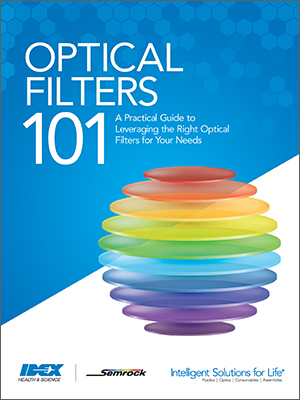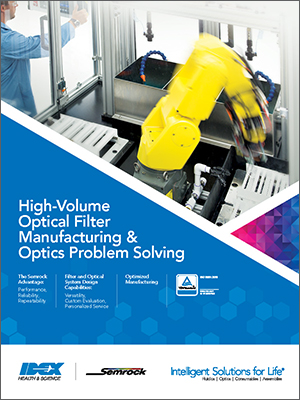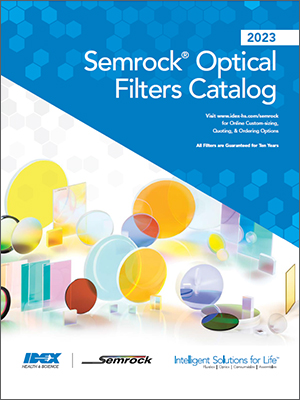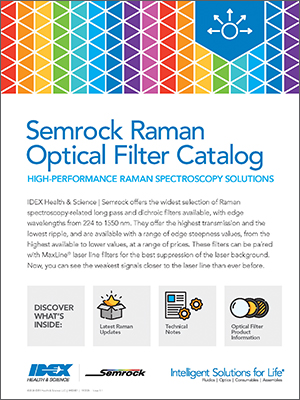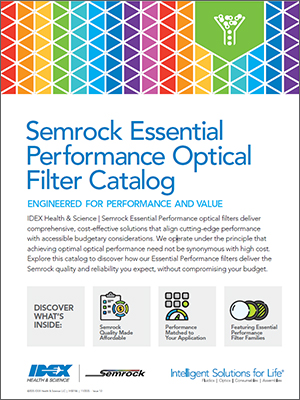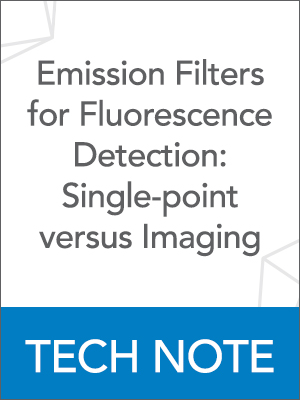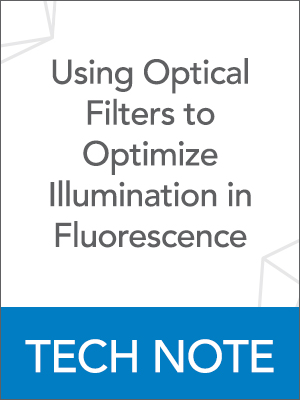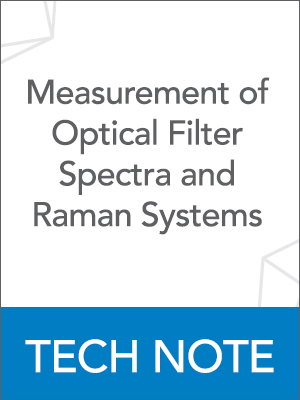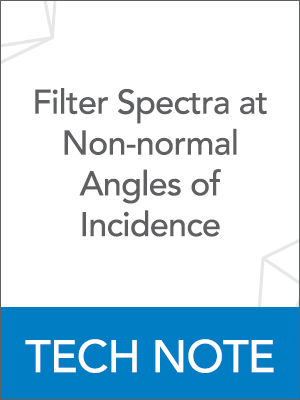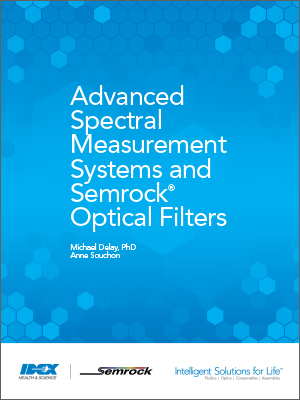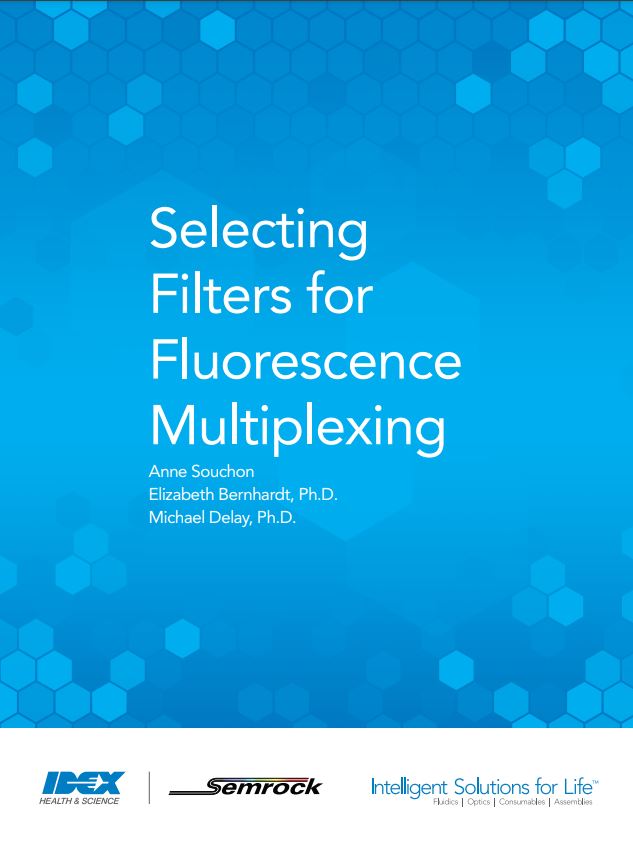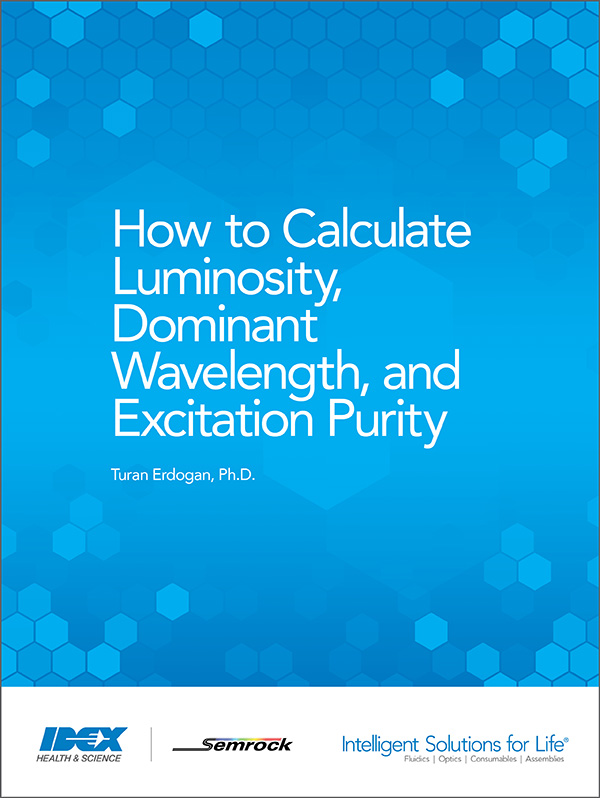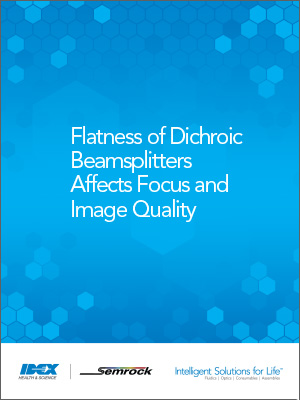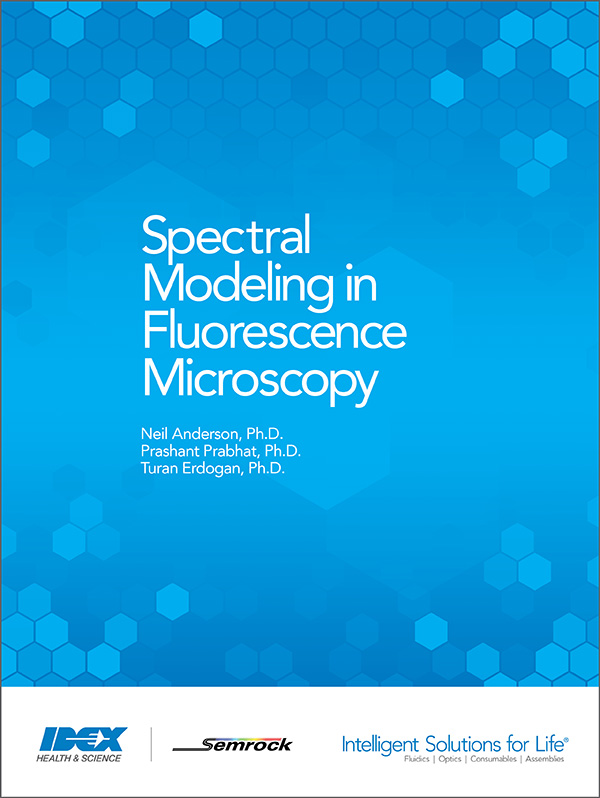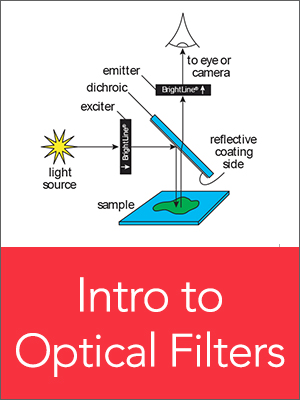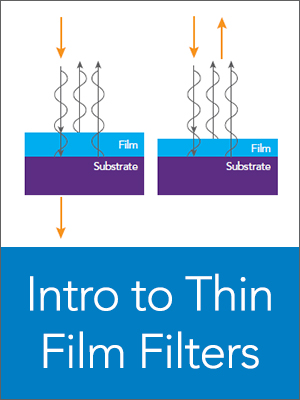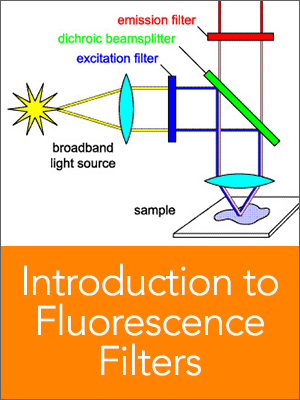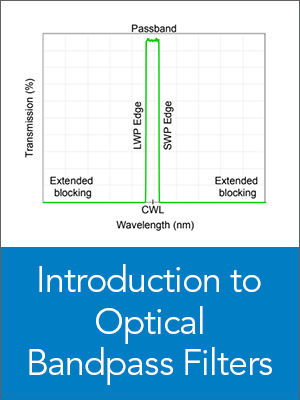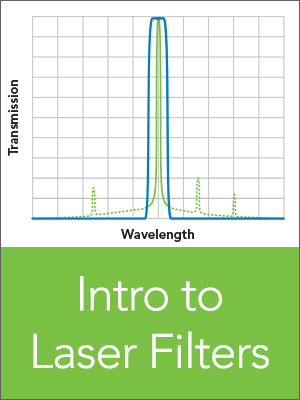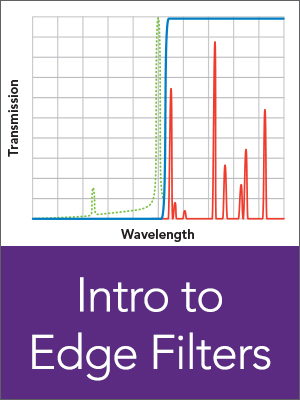Optical Filters Resources
Explore educational content designed to help provide solutions for your unique optical filter needs. This resource page includes brochures, white papers, videos, tech notes, and more for a variety of applications.
Brochures
Accurate and efficient optical filtering is fundamental to achieving optimal results in a variety of scientific and industrial applications. To support your understanding and selection of optical filters, our Semrock team at IDEX Health & Science has developed the Optical Filters 101 Guide. This comprehensive resource provides an in-depth overview of optical filter principles, specifications, and applications.
When you are developing optical instrumentation, you continually face new challenges: new customer requirements and product expectations, evolving technologies, changing markets, and the need for a rapid and decisive response. To help you conquer those challenges, Semrock provides superior products and expert, personalized support. Explore our newest brochure, designed specifically for OEMs, to learn more!
Customizing Catalog Optical Filters Guide
In the world of high-quality optical filters, where precision is paramount, the ability to tailor parts to your exact requirements is essential. At IDEX Health & Science, we offer a range of Semrock™ optical filters to meet your specific needs. This guide will introduce you to our available customization options.
Catalogs
2023 Semrock Optical Filter Catalog
Our engineers and product management teams have collaborated to provide you with the Semrock Optical Filters Catalog from IDEX Health & Science. With proven results, we give you access to high-level engineering that will help make every photon count in your system. Download the 2023 Semrock Optical Filters Catalog to learn more!
Semrock Raman Optical Filter Catalog
Download our new Semrock Raman Optical Filter Catalog for the latest Raman updates, technical notes, and optical filter product information.
Semrock Essential Performance Optical Filter Catalog
Semrock Essential Performance optical filters from IDEX Health & Science deliver comprehensive, cost-effective solutions that align cutting-edge performance with accessible budgetary considerations. Explore our new catalog now!
More Application Catalogs Coming Soon
Technical Notes
Emission Filters for Fluorescence Detection: Single-point versus Imaging
The emission filter is a critical part of any fluorescence system (learn more about fluorescence filters here). Emission filters, and to a lesser extent excitation filters, provide most of the signal-to-noise ratio (SNR) enhancement in fluorescence systems. This note describes emission filters and their use in both single-point (as in photometry and point-scanning) and imaging (microscopic and macroscopic) applications.
Using Optical Filters to Optimize Illumination in Fluorescence and Raman Systems
IDEX Health & Science | Semrock has been delivering the ultimate in fluorescence filters for over 20 years. Our ultra-steep transition edges, deep blocking, and high transmissions have set the standard for excellence and have helped drive the creation of new, higher performance optical systems. In this Tech Note, you will learn to use our unique products to get the most out of your fluorescence and Raman excitation designs, no matter what the light source.
Measurement of
Optical Filter Spectra
Due to limitations of standard metrology techniques, the measured spectral characteristics of thin-film interference filters are frequently not determined accurately, especially when there are steep and deep edges. Learn more about IDEX Health & Science | Semrock's solution to measure optical filter spectra.
Find the
Right Dichroic Beamsplitter
IDEX Health & Science makes a wide variety of 45º dichroic beamsplitters optimized for different purposes. Learn more about selecting the right dichroic beamsplitter.
Optical thin-film coatings can be deposited by a variety of methods. Traditionally the most popular methods for depositing multilayer coatings – required for higher-performance mirrors and filters – include thermal and electron-beam (e-beam) evaporation and ion-assisted e-beam evaporation (IAD). Learn more in this tech note.
Optical Density – or OD, as it is commonly called – is a convenient tool to describe the transmission of light through a highly blocking optical filter (when the transmission is extremely small).
Laser damage to optical filters is strongly dependent on many factors, and thus it is difficult to guarantee the performance of a filter in all possible circumstances. Nevertheless, it is useful to identify a Laser Damage Threshold (LDT) of pulse fluence or intensity below which no damage is likely to occur. Laser damage may be broadly classified into two types: absorption-driven and dielectric-breakdown damage. Learn more in this tech note.
Filter Spectra at Non-normal Angles of Incidence
While most applications call for optical filters to be used at normal incidence, it is important to understand how the spectral properties of different types of filters change when using these filters a non-normal angles of incidence (AOI). There are two main effects exhibited by all filter spectrum as the angle is increased from normal which are discussed in this article.
White Papers
Advanced Spectral Measurement Systems and Semrock Optical Filters
The need for increasingly demanding spectral specifications has required new tools capable of corresponding spectral measurements. Key among these specifications are optical blocking levels and spectral edge steepness measured from UV to NIR wavelengths over a wide range of angles. This white paper summarizes the features of the proprietary tools developed by IDEX Health & Science, including the established Peregrine and the new KolaDeep™ Spectral Measurement Systems.
Selecting Filters for Fluorescence Multiplexing
The steady advances in optical thin film deposition technology over recent decades have enabled production of high performance multiband optical filters that address the increasing demand for multicolor fluorescence instrumentation. Though there is now a wide range of available catalog filters designed for a large variety of fluorophores, selecting suitable filters is often a complex process. Here we present considerations relevant to the design of such a multiplexing system.
Any imaging instrument has a limited tolerance for wavefront error – and every optical element in the light path (including dichroic beamsplitters) contributes to wavefront error, thereby limiting overall imaging system performance. When aiming to achieve diffraction-limited imaging performance or better, it is important to consider wavefront errors from all optical elements in order to calculate the total instrument wavefront error, and to compare it to the maximum allowable value. Learn more in this white paper.
How to Calculate Luminosity Dominant Wavelength and Excitation Purity
In this article we briefly describe the method to calculate the three main parameters that fully specify color in this system: luminosity, dominant wavelength, and excitation purity.
Pixel Shift in Fluorescence Microscopy
Multicolor imaging in fluorescence microscopy is typically performed by sequentially acquiring images of different colors. An overlay of these images is used to study the relative spatial distribution of various types of cellular components. However, in order to ensure that such a composite image is a true representation of the biological phenomena under investigation, it is important to understand imaging artifacts such as “pixel shift” error in multicolor fluorescence imaging.
Flatness of Dichroic Beamsplitters Affects Focus and Image Quality
Even though fluorescence microscopy has become a routine technique for many applications, demanding requirements from technological advances continue to push the limits. Lack of sufficient flatness on a dichroic is not only a problem for imaging quality, but it can also reduce the quality of the illumination light beam when the dichroic is used to reflect the illumination light toward the sample.
In multicolored fluorescence microscopy, pixel shift can cause imaging errors, which can lead to erroneous interpretation of biological data. This article highlights some key considerations in the design of optical filter sets with “zero pixel shift” (less than one pixel error) performance.
Spectral Modeling in Fluorescence Microscopy
Given the critical role optical filters play in fluorescence microscopy, it is important to understand how such filters transmit both the desired fluorescence signal as well as the undesired background light. Learn more about spectral modeling in fluorescence microscopy in this white paper.


